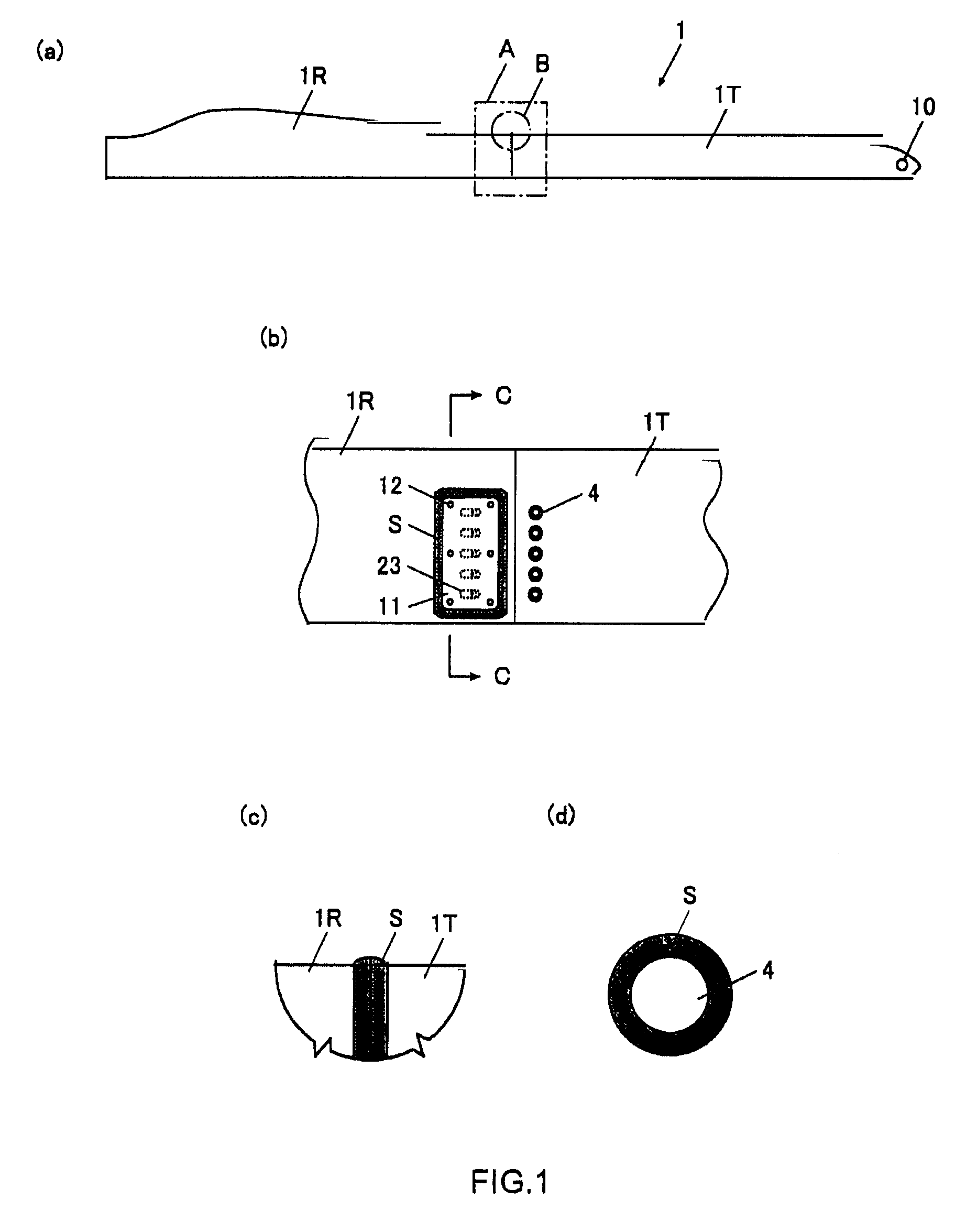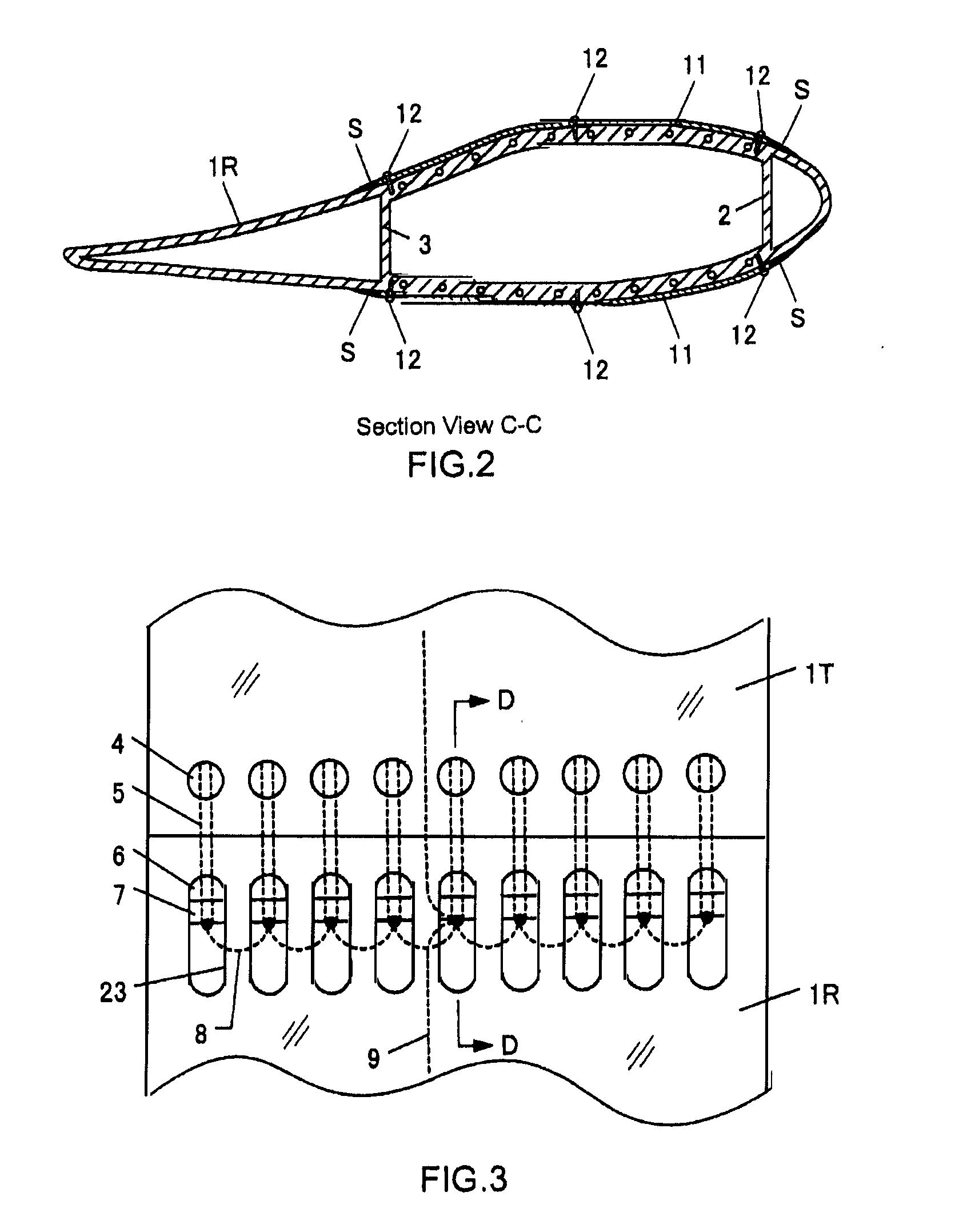Separable blade for wind turbine
a technology of wind turbines and blades, which is applied in the manufacture of final products, machines/engines, mechanical equipment, etc., can solve the problems of aerodynamic performance and noise increase weight and cost,
- Summary
- Abstract
- Description
- Claims
- Application Information
AI Technical Summary
Benefits of technology
Problems solved by technology
Method used
Image
Examples
Embodiment Construction
[0042]An embodiment of the present invention will be described below in accordance with accompanying drawing. The below is one embodiment of the present invention, and not intended to limit the present invention.
[0043]FIG. 1 (a) is an overall view of a separable blade as set forth in one embodiment of the present invention. FIG. 1 (b) is a detail view of part A; FIG. 1 (c) is a detail view of part B; and FIG. 1 (d) is an expanded view of the exposed surface of the first fastener. FIG. 2 is a cross-sectional diagram along section C-C shown in FIG. 1 (b). FIG. 3 is a plan view schematic diagram of the connector part, and FIG. 4 is a cross-sectional diagram along section D-D.
[0044]As a shown in FIG. 1 and FIG. 2, the separable blade 1 of the present embodiment is structured from a first part blade 1T on the blade tip side, and a second part blade 1R on the blade root side. The part blades 1T and 1R are made from a non-electrically conductive material such as FRP, and, as shown in FIG. ...
PUM
 Login to View More
Login to View More Abstract
Description
Claims
Application Information
 Login to View More
Login to View More - R&D
- Intellectual Property
- Life Sciences
- Materials
- Tech Scout
- Unparalleled Data Quality
- Higher Quality Content
- 60% Fewer Hallucinations
Browse by: Latest US Patents, China's latest patents, Technical Efficacy Thesaurus, Application Domain, Technology Topic, Popular Technical Reports.
© 2025 PatSnap. All rights reserved.Legal|Privacy policy|Modern Slavery Act Transparency Statement|Sitemap|About US| Contact US: help@patsnap.com



